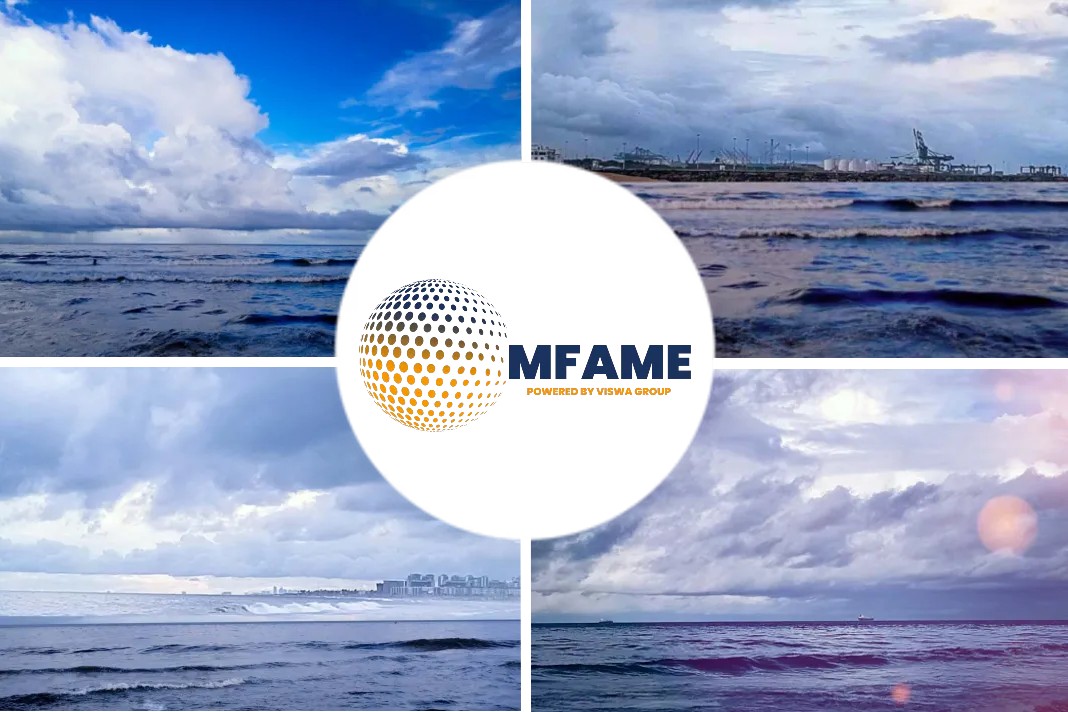
Novel ammonia-fuelled midsize LPG/ammonia carrier concept gets green light, while MAN Energy Solutions passes century mark for methanol dual-fuel engines. Some of the first ships to burn ammonia fuel in new two-stroke, dual-fuel engines currently under development will most likely be the multi-gas carriers that carry it as cargo.
Ammonia Fuelled Carrier
The concept for the ammonia-fuelled 40,000-m3 LPG/ammonia carrier is being jointly developed by the Japanese tripartite partnership of owner Mitsui OSK Lines (MOL), shipbuilder Tsuneishi Shipbuilding and engine manufacturer Mitsui E&S Shipbuilding. And, in an unusual step, both ClassNK and Lloyd’s Register each issued an approval-in-principle (AiP) in April for the basic design of the ammonia-fuelled gas carrier. To guide their development of the novel LPG/ammonia gas carrier, MOL, Tsuneishi Shipbuilding and Mitsui E&S Shipbuilding conducted hazard identification (HAZID) studies with ClassNK and LR, using their guidelines to assess ship safety for ammonia-fuelled vessels. This risk assessment strategy resulted in both classification societies recognising the safety of the vessel’s basic design.
AEngine Project
Danish engine designer MAN Energy Solutions (MAN ES) is part of the Innovation Fund Denmark-backed AEngine project, joining with class society DNV, fuel supply systems provider Eltronic FuelTech and the Technical University of Denmark to design and demonstrate an ammonia-based propulsion system. DNV is handling the safety aspects and will be performing risk assessments with regard to HAZID, hazard and operability (HAZOP) and failure mode and effect analysis (FMEA). In its role as a classification society, DNV will also be developing regulations on ammonia purging and venting. MAN ES will integrate existing technology in the ammonia-based propulsion system while designing the ammonia fuel injection, combustion components, exhaust gas after-treatment technology and engine components. But to derive these environmental benefits, engine designers must also wrestle with numerous technical and operational challenges in terms of engine performance, including combustion, fuel density, safety, toxicity and corrosiveness.
Methanol Engines
Besides ammonia, MAN ES continues to expand its options for other fuels, such as methanol. Orders for the first G80ME-LGIM two-stroke, large-bore methanol dual-fuel engines were announced in March. A total of nine G80ME-LGIM Mk10.5 engines were ordered by South Korea shipbuilders, including seven by Hyundai Samho Heavy Industries (HSHI) and two by HJ Shipbuilding for nine 9,000-TEU ultra-large container ships for HMM. All nine ULCSs will be fitted with MAN ES EGR systems and be delivered in 2025. “This new order means that we now have over 100 ME-LGIM engines on order or in service,” says MAN ES head of promotion and customer support, Thomas S Hansen, noting the mix of the engine orders is made of container vessels (61%), tankers and bulk carriers (17%), and general cargo (5%).
At the testing and verification of the vessel’s MAN B&W 6G50ME-LGIM (liquid gas injection methanol) engine, Maersk head of fleet technology, Ole Graa Jakobsen, said: “It is an engine that has been designed only because, at Maersk, we have decided to use methanol as our decarbonisation fuel.” Mr Jakobsen said the two-stroke was pivotal in underpinning Maersk’s “decarbonisation target in 2030, where we want to halve our emissions compared to 2020 and be carbon neutral by 2040.”
Did you subscribe to our Newsletter?
It’s Free! Click here to Subscribe.
Source: Rivieramm























